Are you feeling overwhelmed by mounting credit card bills, personal loans, or medical debt? If you’re nodding your head right now, you’re not alone. Millions of Americans wake up each day wondering how they’ll ever break free from the crushing weight of debt.
Debt settlement programs have emerged as a popular option for those seeking relief, but they’re not a magic solution for everyone. Before you decide if this path is right for you, it’s crucial to understand both the potential benefits and the significant risks involved.
What Is Debt Settlement?
Debt settlement is a process where you (or a company you hire) negotiate with creditors to pay less than the full amount you owe. The goal is to convince your creditors that receiving a portion of what you owe is better than getting nothing if you were to declare bankruptcy.
Typically, the process works like this:
- You stop making payments to your creditors
- Instead, you deposit money into a dedicated account each month
- Once you’ve saved enough, negotiations begin with each creditor
- If a creditor agrees to a settlement, you pay the negotiated amount in a lump sum or structured payment plan
- The creditor then considers your debt satisfied, even though you paid less than the original balance
Sounds simple enough, right? But there’s much more to consider before deciding if debt settlement is your ticket to financial freedom.
Debt Settlement: The Promising Upsides
Significant Debt Reduction
The most attractive benefit of debt settlement is the potential to reduce your total debt burden. Many debt settlement companies claim they can reduce your debt by 50% or more, though realistic expectations are typically in the 30-50% range.
Mark, a software developer from Denver, shared his experience: “After my divorce, I was drowning in $35,000 of credit card debt. Through debt settlement, I ended up paying about $18,000 total. It wasn’t easy, but I couldn’t see any other way out.”
One Simple Monthly Payment
Rather than juggling multiple due dates and minimum payments, debt settlement programs typically require just one monthly deposit into your settlement fund. This simplification can reduce stress and make budgeting more straightforward.
Faster Than Minimum Payments
If you’re only making minimum payments on high-interest debt, you could be stuck in debt for decades. Debt settlement programs typically aim to resolve your debts within 2-4 years.
Avoiding Bankruptcy
For many, debt settlement represents a less severe alternative to bankruptcy. While both options have negative consequences, bankruptcy remains on your credit report for 7-10 years and can make future borrowing extremely difficult.
The Concerning Downsides of Debt Settlement
Credit Score Damage
There’s no way around it: debt settlement will hurt your credit score, often significantly. When you stop making payments to your creditors (which most programs require), each missed payment gets reported to credit bureaus.
Additionally, settled accounts appear on your credit report with notations like “settled for less than the full amount,” which future lenders view as a red flag.
Fees Can Be Substantial
Debt settlement companies don’t work for free. Most charge fees ranging from 15% to 25% of the enrolled debt or the amount saved. These fees can significantly reduce your overall savings.
No Guarantee of Success
Here’s an uncomfortable truth: creditors are under no obligation to negotiate or accept settlement offers. Some creditors have policies against working with debt settlement companies altogether. Others might refuse to negotiate until your account is seriously delinquent, which further damages your credit.
Tax Implications
The IRS generally considers forgiven debt as taxable income. This means if you settle a $20,000 debt for $10,000, you might owe income tax on that $10,000 difference. There are exceptions for insolvency, but many people are caught off guard by this unwelcome tax surprise.
Potential for Legal Action
While you’re saving up for potential settlements, creditors may become impatient. They have the right to sue you for unpaid debts, which could result in wage garnishment or liens against your property.
Debt Settlement vs. Other Options
To help you understand how debt settlement compares to alternatives, here’s a comprehensive comparison table:
| Factor | Debt Settlement | Credit Counseling | Debt Consolidation | Bankruptcy (Ch. 7) |
| Timeline | 2-4 years | 3-5 years | Varies by loan term | 3-6 months |
| Credit Impact | Significant negative | Minimal negative | Minimal to moderate | Severe negative |
| Debt Reduction | 30-50% possible | None (full amount paid) | None (full amount paid) | Up to 100% |
| Fees | 15-25% of enrolled debt | $25-50 Monthly | Loan origination fees, interest | $1,500-3,000 legal fees |
| Success Guarantee | No guarantee | High success rate | Guaranteed if approved | Nearly guaranteed |
| Tax Consequences | Forgiven debt may be taxable | None | None | Minimal |
| Legal Protection | None | None | None | Automatic stay against collections |
Is Debt Settlement Right for You?
Debt settlement might be worth considering if:
- You’re struggling with $15,000+ in unsecured debt (credit cards, personal loans, medical bills)
- You can’t afford to make minimum payments but could commit to a regular settlement fund contribution
- Your financial hardship is genuine but temporary
- You understand and accept the credit consequences
- You’ve exhausted other options like balance transfers or debt consolidation loans
However, debt settlement is probably NOT right for you if:
- You could realistically pay off your debt within 2-3 years through budgeting
- You have a good credit score you need to maintain
- Your debt is primarily student loans, mortgages, or auto loans (these are harder to settle)
- You don’t have reliable income to make consistent program payments
- You’re facing imminent legal action from creditors
DIY Debt Settlement: A Viable Alternative?
Yes, you absolutely can negotiate settlements directly with your creditors, bypassing the fees charged by settlement companies. This approach requires:
- Organization and documentation of all your debts
- An understanding of realistic settlement targets (typically 40-60% of the original amount)
- A lump sum ready to offer (creditors prefer one-time payments)
- Persistence and negotiation skills
- Getting all agreements in writing before making payments
Sarah, a retail manager from Atlanta, shared: “I settled three credit card accounts on my own. It took dozens of phone calls and a lot of patience, but I saved about $12,000 and didn’t have to pay any fees to a company.”
Warning Signs of Debt Settlement Scams
Unfortunately, the debt relief industry attracts its share of predatory companies. Watch out for these red flags:
- Guarantees of specific debt reduction percentages
- Upfront fees before any debts are settled
- Pressure to stop communicating with your creditors
- Promises to “repair” your credit immediately
- Claims about “new government programs” for debt relief
- Unwillingness to provide clear fee structures in writing
Steps Before Entering a Debt Settlement Program
If you’re seriously considering debt settlement, take these important steps first:
- Calculate your total debt and income to ensure you can make consistent program payments
- Research multiple companies through the Better Business Bureau and Consumer Financial Protection Bureau
- Understand the tax implications by speaking with a tax professional
- Consider free credit counseling from a non-profit agency first
- Read the fine print of any agreement carefully, especially fee structures
- Prepare for credit consequences by understanding how your score will be affected
The Road to Recovery After Debt Settlement
Once you’ve completed a debt settlement program, rebuilding your financial health becomes the priority:
- Create an emergency fund to avoid future debt from unexpected expenses
- Monitor your credit reports to ensure settled accounts are reported correctly
- Consider secured credit cards to begin rebuilding your credit history
- Establish a realistic budget that prevents falling back into debt
- Seek financial education through books, courses, or non-profit counseling
The Bottom Line on Debt Settlement
Debt settlement programs offer a middle path between struggling with minimum payments and declaring bankruptcy. For some, they provide a viable route to becoming debt-free faster than they could on their own. For others, the credit damage, uncertain outcomes, and potential tax consequences outweigh the benefits.
The most successful debt settlement participants approach the process with realistic expectations, a clear understanding of the risks, and a commitment to changing the financial habits that led to debt in the first place.
Remember, there’s no one-size-fits-all solution to debt problems. Taking the time to understand all your options—including credit counseling, debt consolidation, and bankruptcy—ensures you’ll make the choice that best fits your unique financial situation.
Whatever path you choose, the goal remains the same: breaking free from debt and building a more secure financial future for yourself and your family.

























